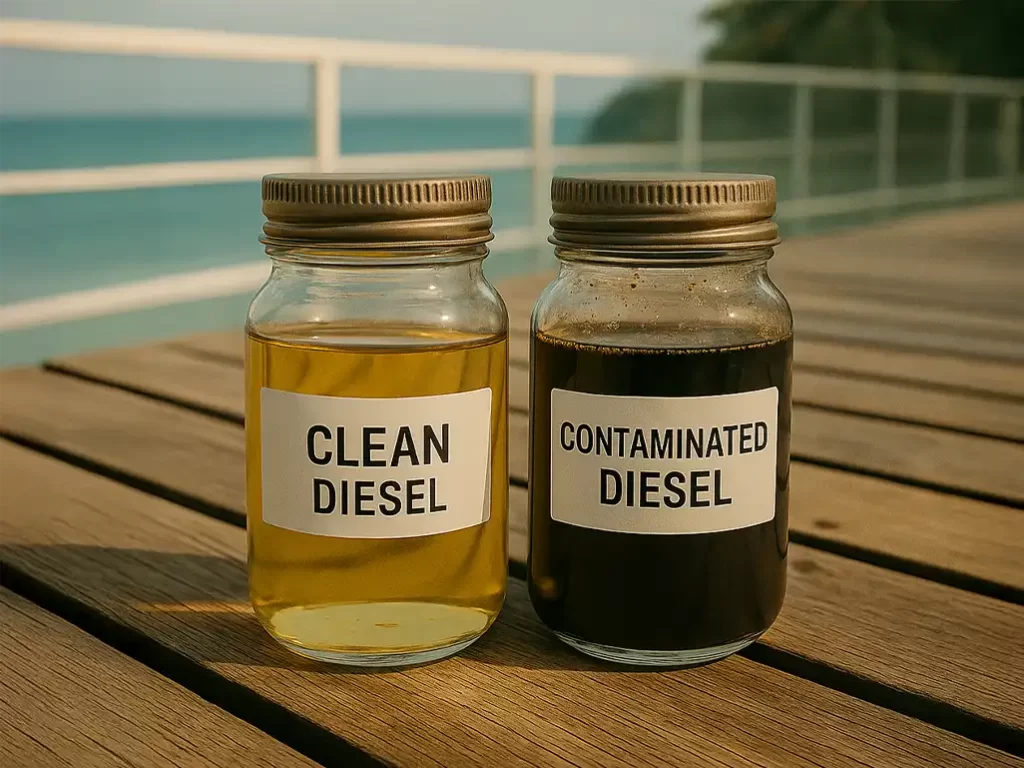Fuel Polishing for Yachts in Thailand
Yacht owners in this region are gambling on fuel that would be condemned elsewhere. When it comes to yacht maintenance, clean fuel is the foundation. Without it, engines stop. Charters fail. Costs soar. Yet in Southeast Asia, fuel polishing is still treated as optional. That’s a mistake.
“80% of breakdowns and failures on blue water cruising yachts are caused by fuel contamination.”
Diesel isn’t the Problem — Climate is.
In Southeast Asia, heat, humidity, and water attack your tanks from day one:
- Heat triggers oxidation
- Moisture becomes water at the tank floor
- Water feeds bacteria and fungi
- Microbes turn into sludge and acid
- Sludge clogs filters, fouls injectors and corrodes tanks
Left alone, diesel doesn’t stay clean. It turns into a risk.
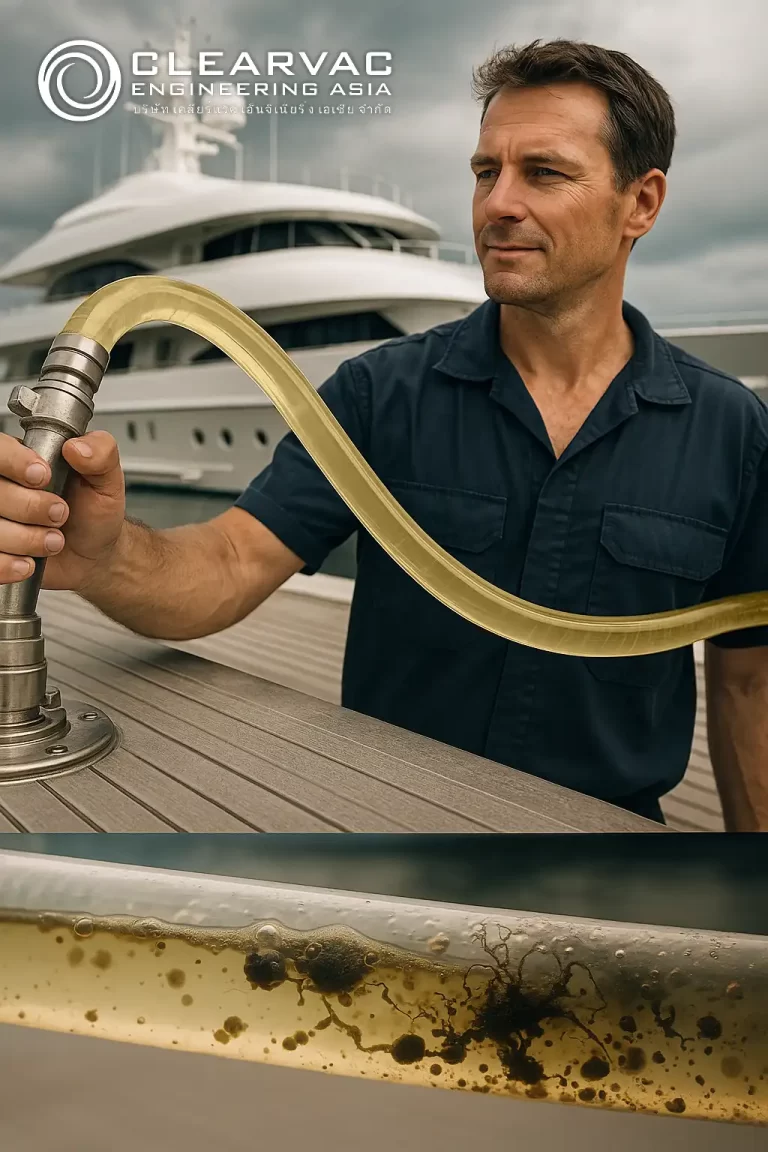
Beliefs That Break Boats
“We buy high-grade diesel.”
“We clean tanks during haul-out.”
“We use it quickly enough.”
All sound reassuring. None stop contamination.
- Even premium fuel degrades after delivery
- Marine tank cleaning clears what’s there. It can’t stop what’s coming next
- ‘Fast turnover’ means stirring up what’s already there
Without fuel testing and polishing, these beliefs become blind spots. And blind spots cause breakdowns.
Most crews check levels. Not quality. But bad fuel doesn’t warn you—it waits. One blocked filter offshore? That’s days lost and thousands spent.
Captains watch the clock. Engineers chase alerts. Owners juggle schedules. Nobody chases fuel until it’s already too late.
We’ve seen it across Thailand. The pattern’s always the same: water, bugs, sediment. All preventable.
“For superyachts, which typically operate in humid conditions, the presence of water in fuel increases the risk of microbial proliferation and, without treatment, can result in filter blockages and engine failures or damage.” — SuperyachtNews
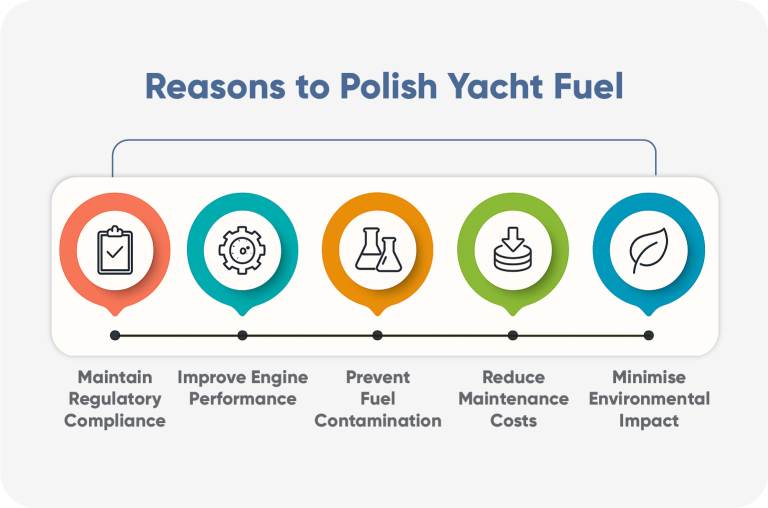
What is Fuel Polishing?
Fuel polishing is simple. And essential.
It draws fuel from the tank, filters out water, microbes, and sludge, then returns it clean. Closed-loop systems capture particles as small as 2 microns. Some sweep the bottom. Some dose biocide.
It doesn’t take long. But it resets your fuel to ISO standards. This is routine in the U.S, Europe, and Australia. It should be standard here too.
Cleaner fuel protects injectors, pumps, and filters. It burns better, runs smoother, lasts longer.
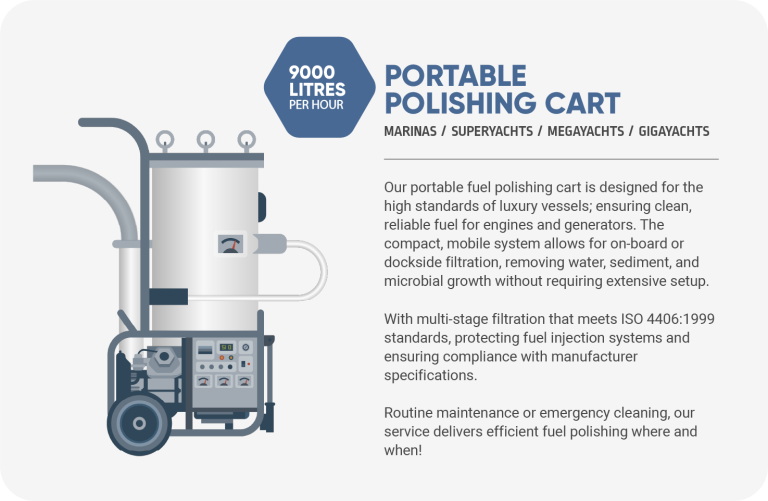
Why Southeast Asia lags
So why isn’t fuel polishing standard in Southeast Asia? Three reasons:
No consistent rules.
Most countries don’t mandate fuel care for yachts or small fleets.
Big players follow ISO. The rest rely on experience or tradition.Limited training.
Microbial risks in warm diesel are serious—but often under-taught.
Many crews haven’t had access to tropical fuel care training.No urgency.
Until something fails, polishing feels optional. But repairs, delays, and lost charters always cost more.
The region’s climate makes this worse. Hot air, wet tanks, inconsistent fuel. It’s the perfect storm for sludge.
“Marine gas oil (MGO) fuels are more susceptible than HFO/VLSFO fuels to microbial contamination. Microbes need a habitable temperature, a food source and water — all of which can be found in many fuel tanks.”
— Lloyd’s Register FOBAS via Manifold Times
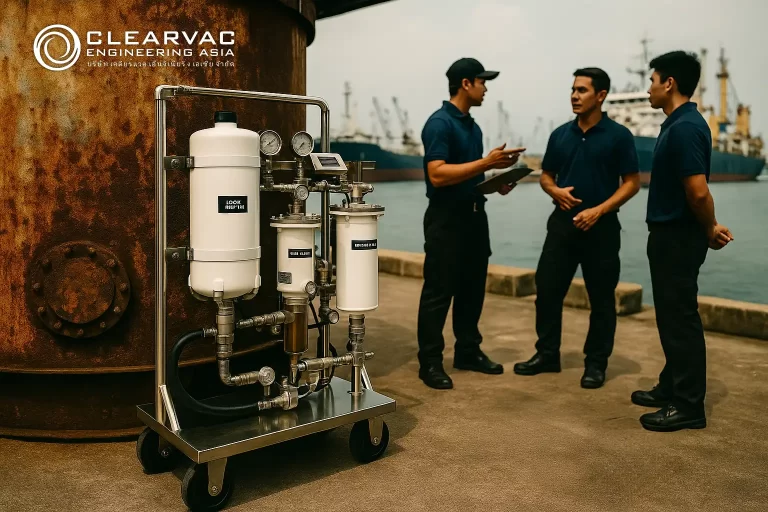
The Missing Link: Documentation
You can’t fix what you don’t track.
Too many boats run on memory. No logbooks. No timestamps. No trail.
When crew rotate, knowledge disappears.
That’s when the real risk begins—decisions made blind. Records turn invisible work into proof. Owners and brokers don’t want promises. They want data. You can’t see clean fuel. But you can show it.
Real‑World Outcomes
What happens when fuel gets ignored?
- Guests show up. The generator doesn’t.
- Filters clog mid-crossing. The boat limps back.
- Injectors seize. The trip’s done.
- Tanks corrode. Costs explode.
These aren’t freak accidents. They’re recurring patterns. We’ve seen them on yachts, ferries, workboats. Everywhere fuel sits, trouble brews.

What Bad Fuel Sounds Like
It starts with a cough. Then a drop in RPM. A genset stutters. A pump strains. The engineer’s face tightens. Guests notice the lights flicker.
Then it’s alarms. Downtime. Apologies. All from a problem that sat silent for months.
Myths vs Realities
Myth: “Biocide fixes everything.”
Truth: It kills microbes. But sludge stays. Only filters can clear that.
Myth: “We burn through fuel fast.”
Truth: Not fast enough. Tanks still sit. Bugs still grow.
Myth: “We’ve never had an issue.”
Truth: That’s luck, not proof. Contamination doesn’t show up—until it does.
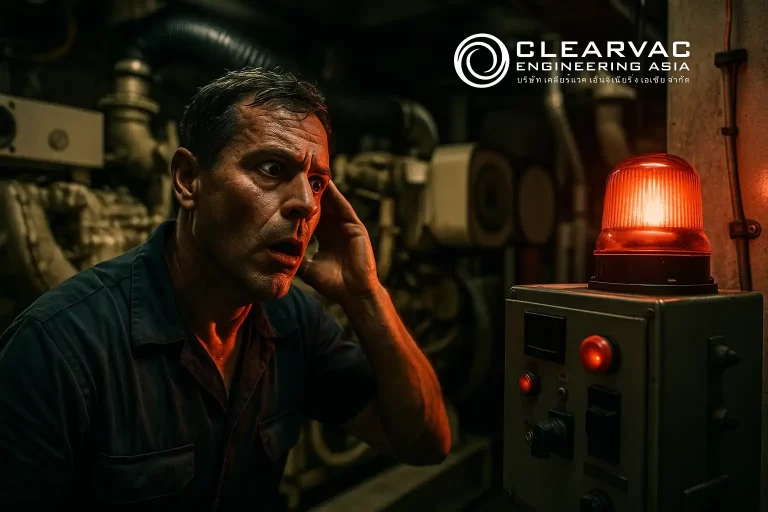
Steps to Cleaner Fuel
Want fewer breakdowns? Build better habits:
- Test fuel every 3–6 months
- Polish every 6–12, or after idle time
- Check filters and tanks monthly
- Use biocide only when needed
- Write everything down
Make it part of the ops manual. Assign it to someone.
Train the team. Keep it routine.
Habits stop surprises. Discipline stops downtime!
Tools and Vendors
You don’t need to build it yourself.
- Mobile crews can polish on-site
- Labs test fuel fast
- Good vendors give clear reports, not vague advice
Look local. Thailand, Singapore, Malaysia, these teams know the climate, the fuel, the risks.
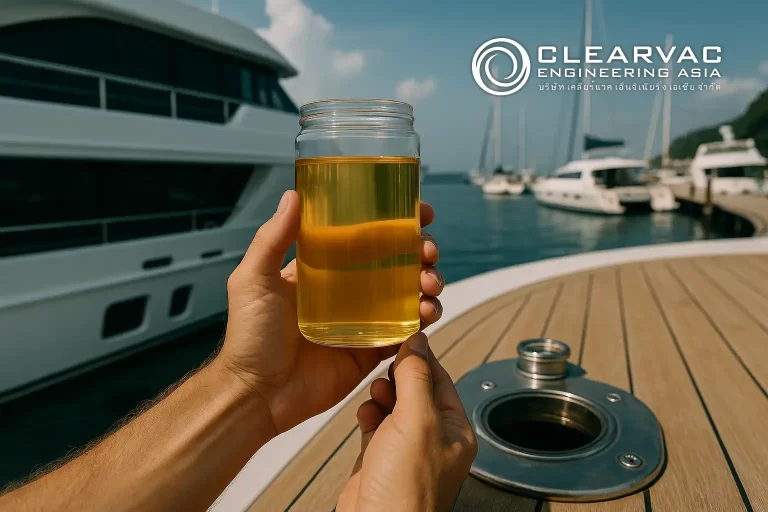
Protect Your Fuel. Protect Your Margin.
Superyachts carry thousands of litres of diesel. Valuable, high-spec fuel that was clean when it went in. Letting it degrade isn’t just bad for engines, it’s bad for the bottom line.
Fuel polishing keeps that diesel viable. It prevents waste, delays, and unnecessary replacement. If contamination sets in and polishing is skipped, disposal becomes the last resort—regulated, expensive, and avoidable.
Polishing reclaims what you already paid for. It turns a liability back into an asset.
Clean fuel stays onboard. Problems don’t.
What Owners Want
Owners don’t want surprises. They want systems that work.
They assume fuel is fine. And when things fail, they don’t want excuses. They want answers. Polishing gives you control. And a clean logbook gives them confidence.
No drama. Just data.
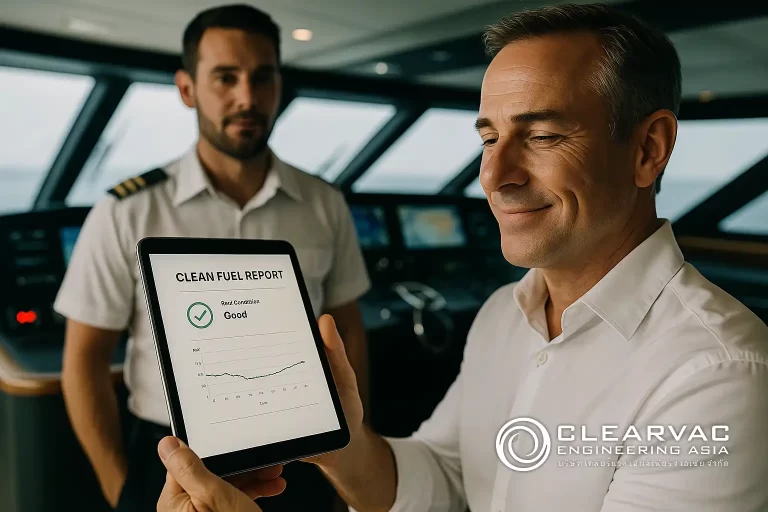
Crew Culture
Fuel care isn’t just an engine-room job. It’s leadership. If the bridge doesn’t care, the bilge doesn’t either.
- Brief the team on risks
- Show what polishing looks like
- Share clean vs dirty fuel samples
- Include results in performance reviews
When everyone sees the cost of bad fuel, they take ownership. When Leadership sets the tone, habits follow.
What to Do Next
Still running on trust? Switch to facts.
- Review your fuel plan
- Book a polish or test, this month
- Ask for reports you can show
- Track fuel quality like you track hours
Clean fuel keeps the vessel moving. Keeps the guests relaxed. Keeps your name off the incident report.
Skip it, and you’ll pay for it, fast.

